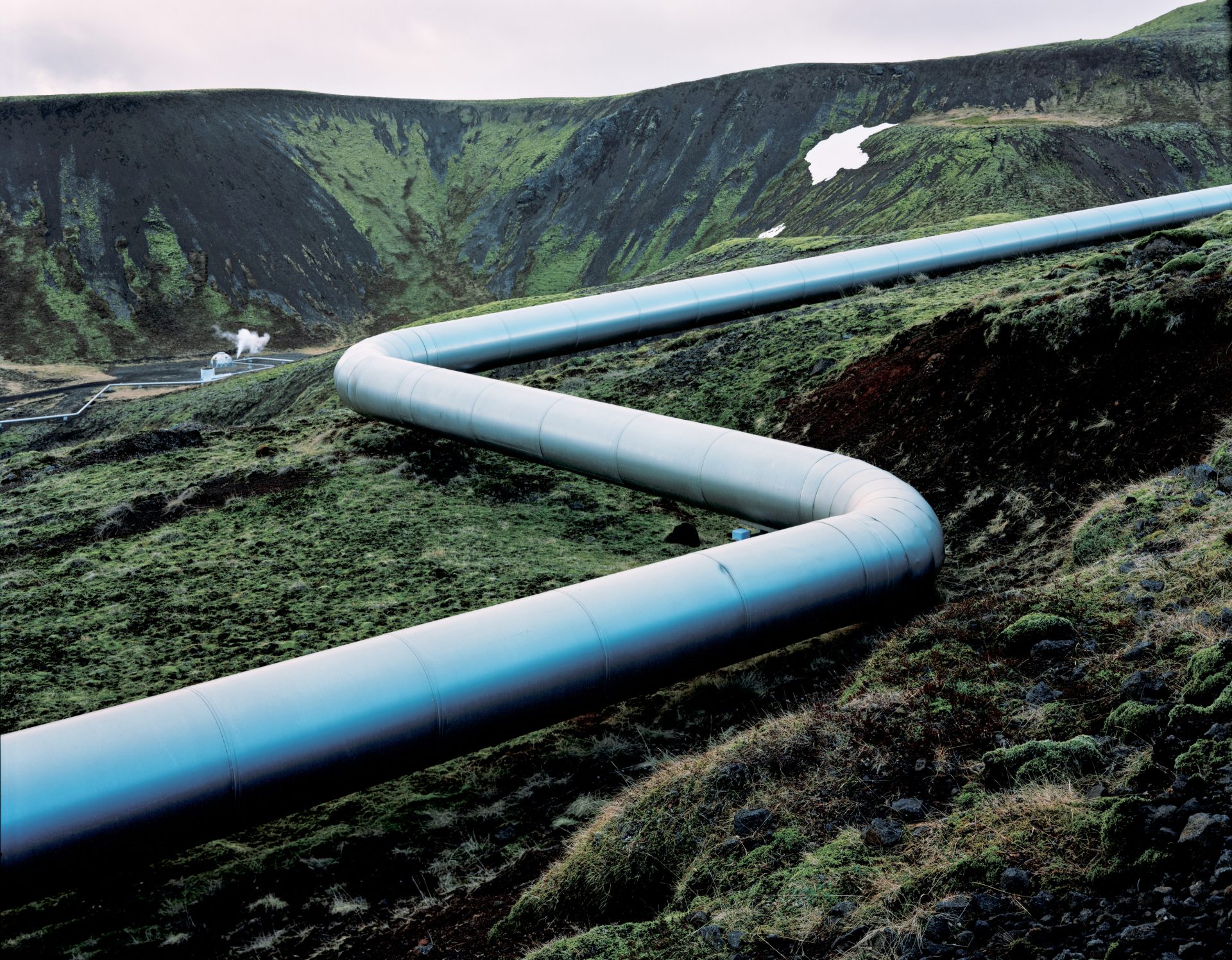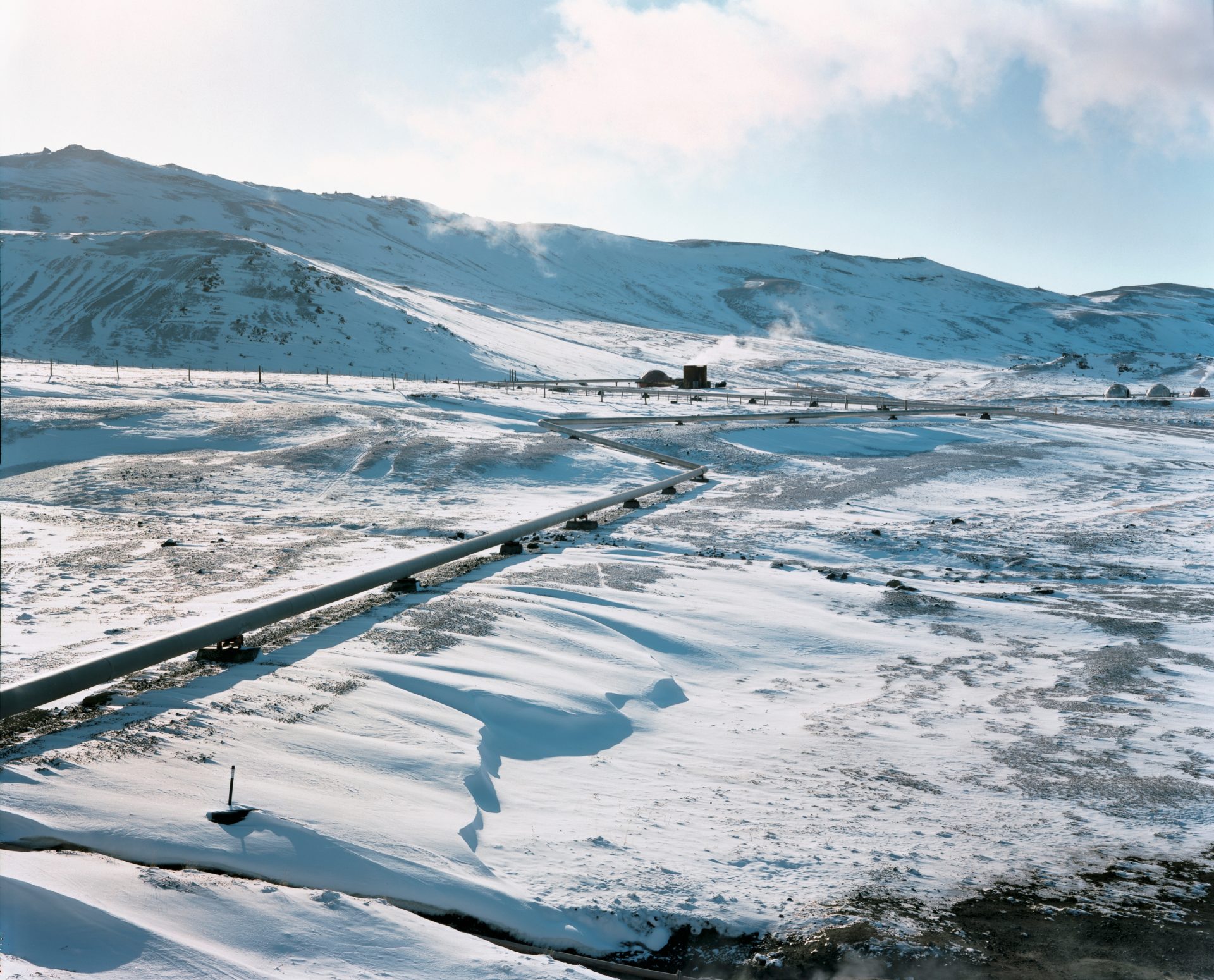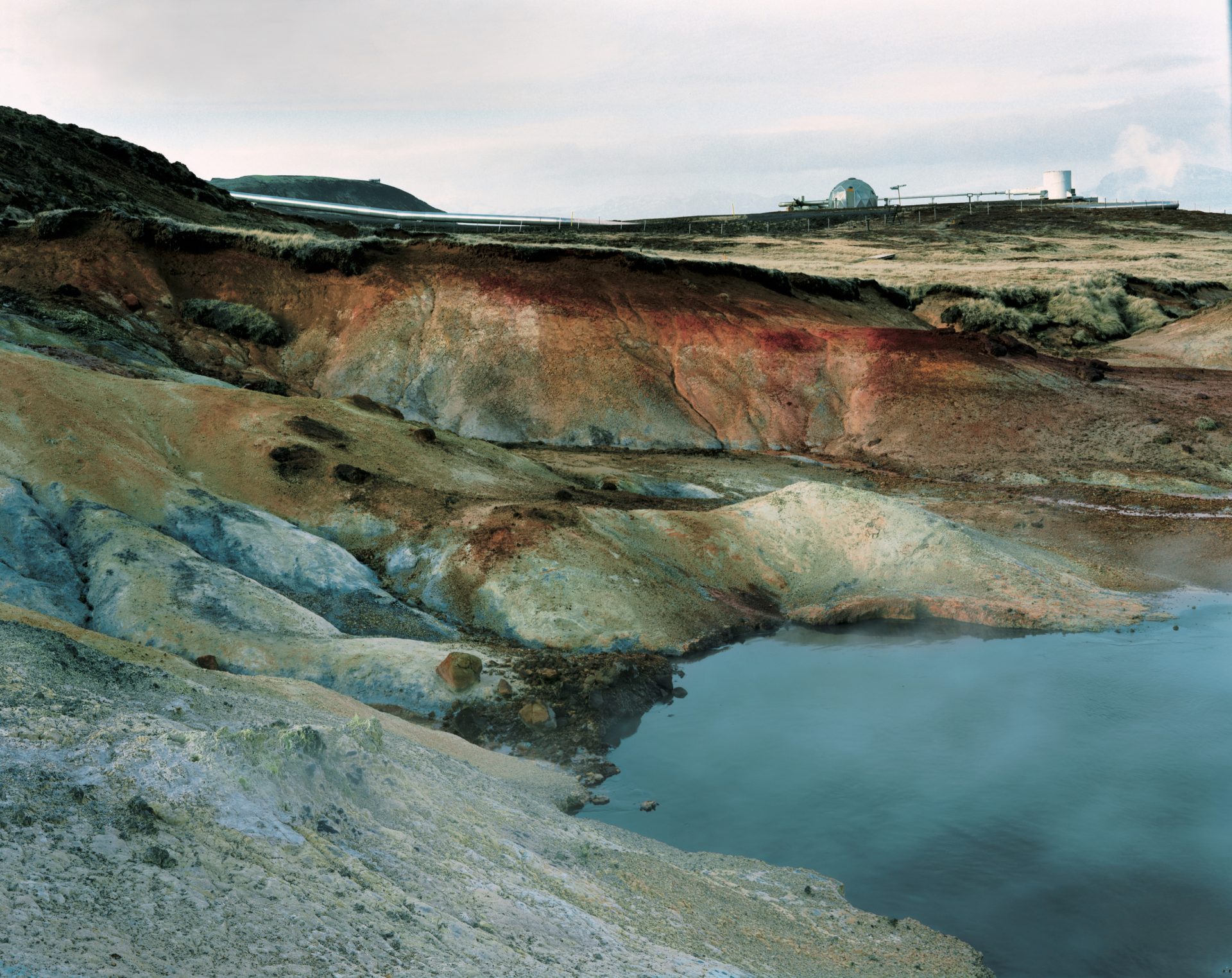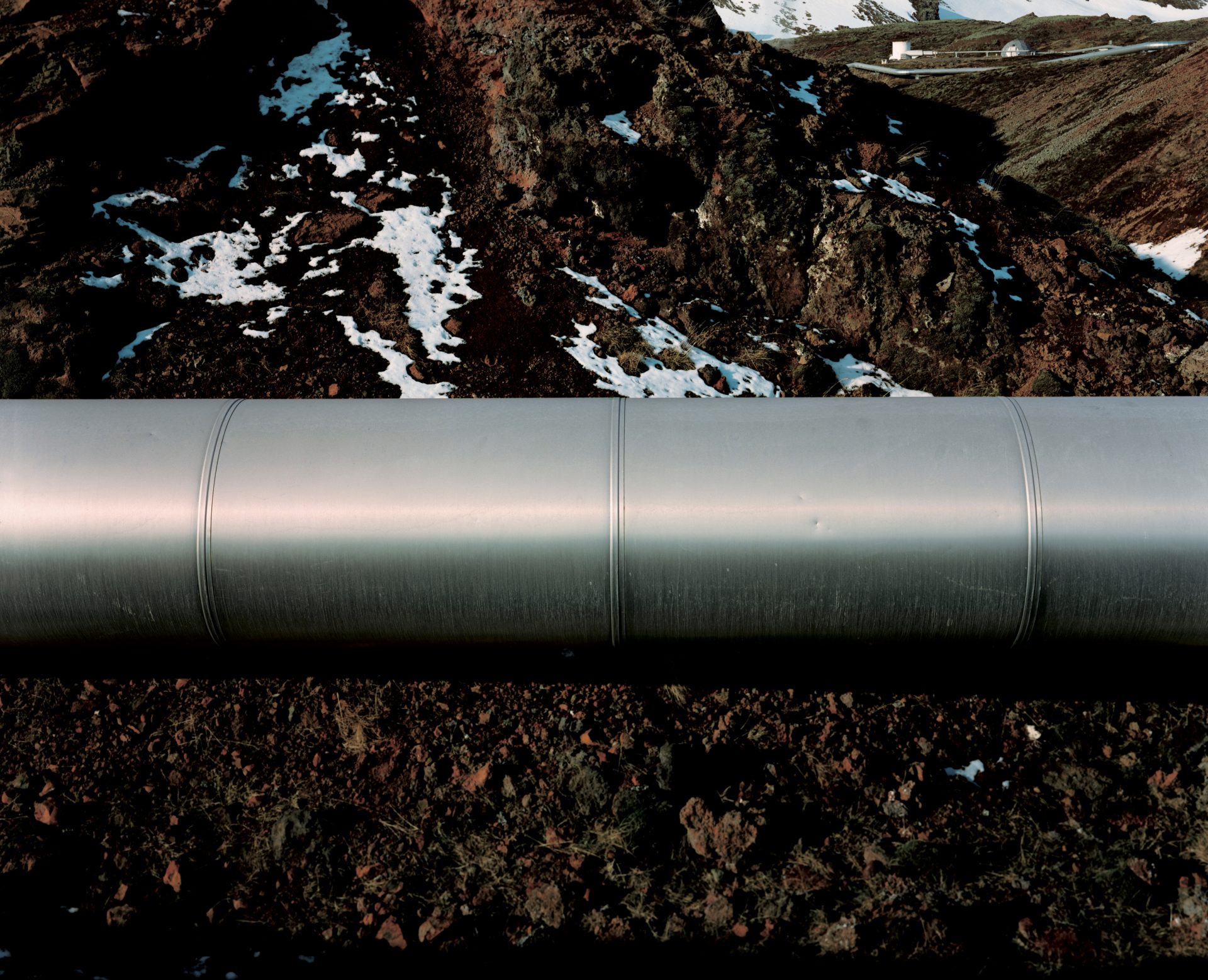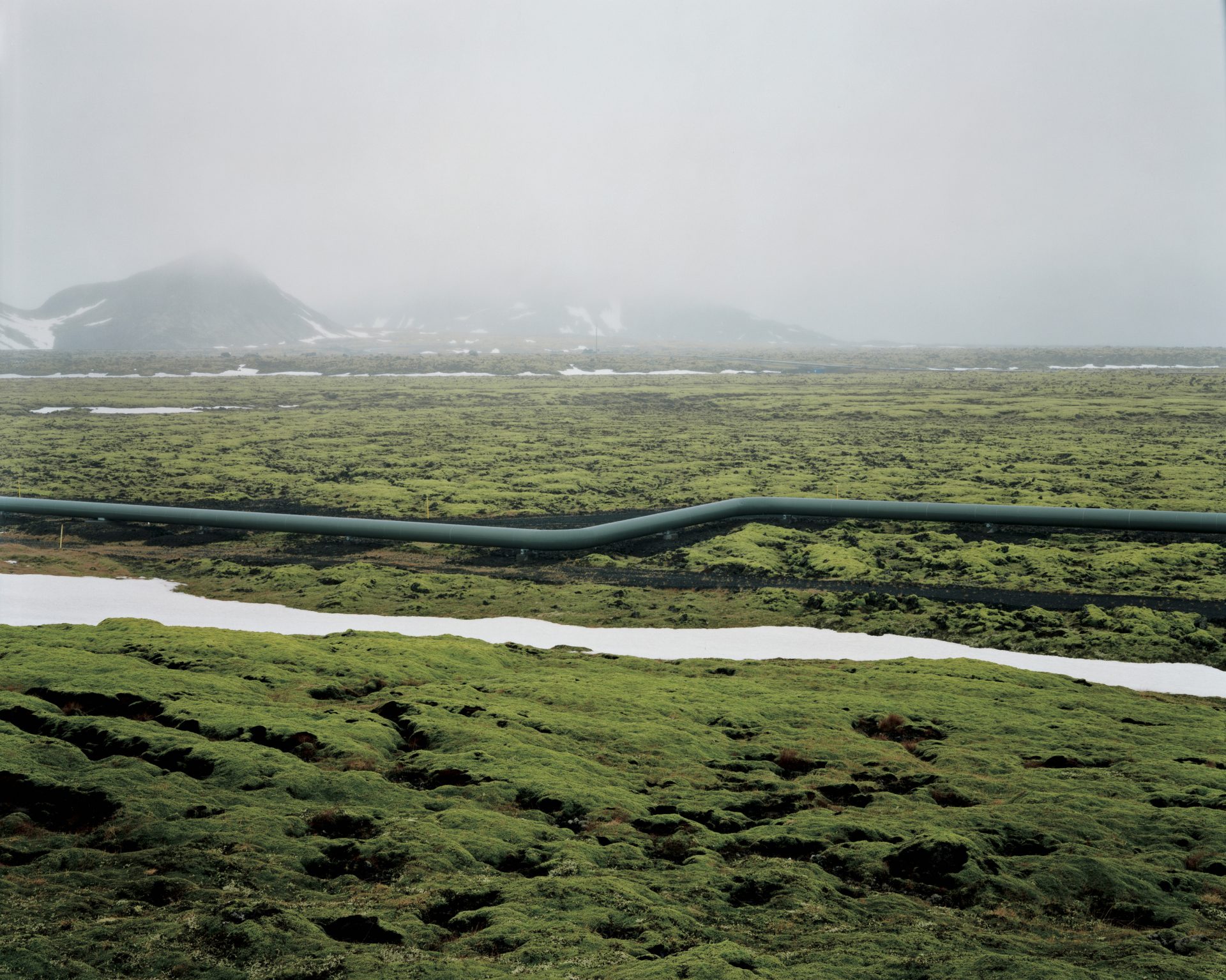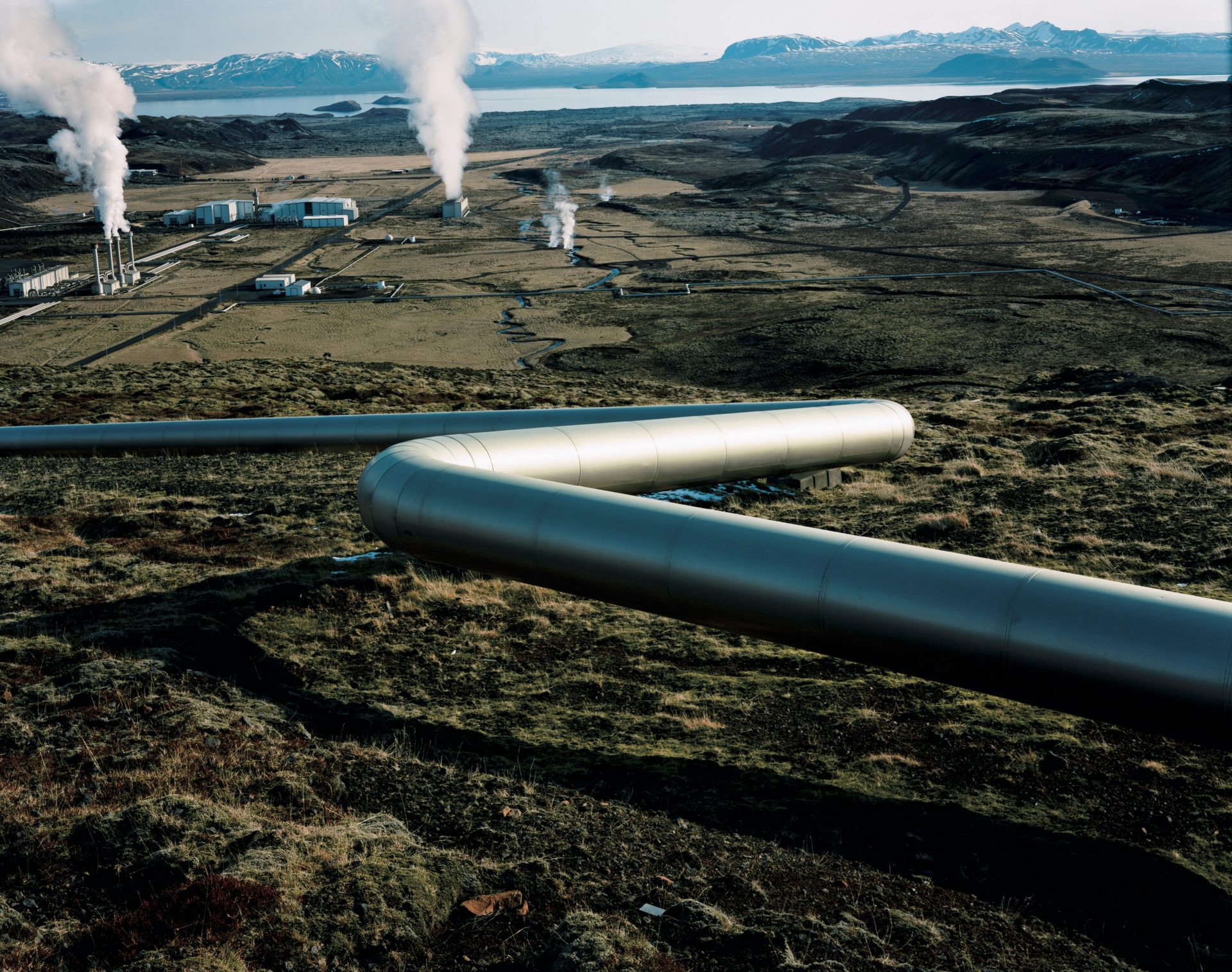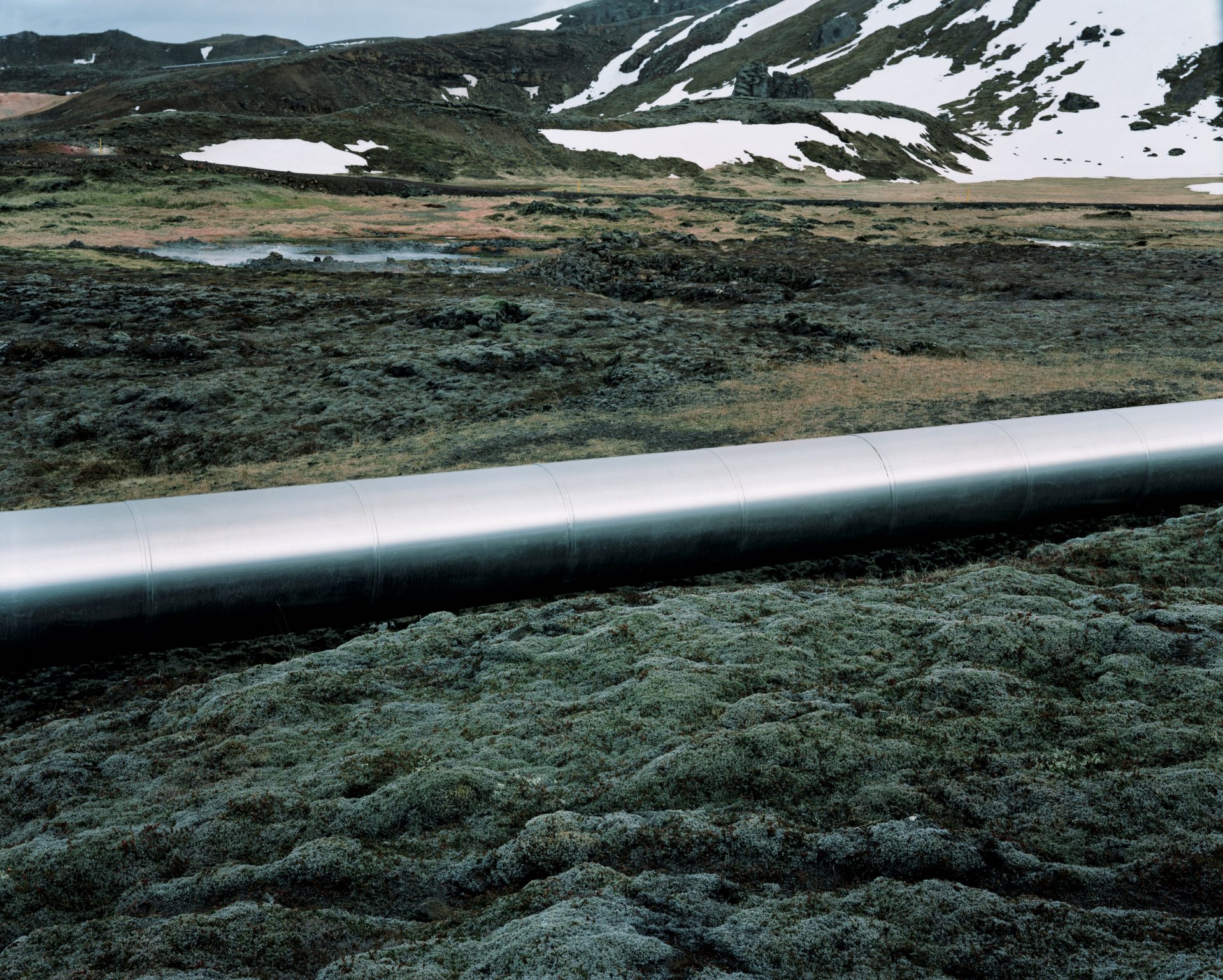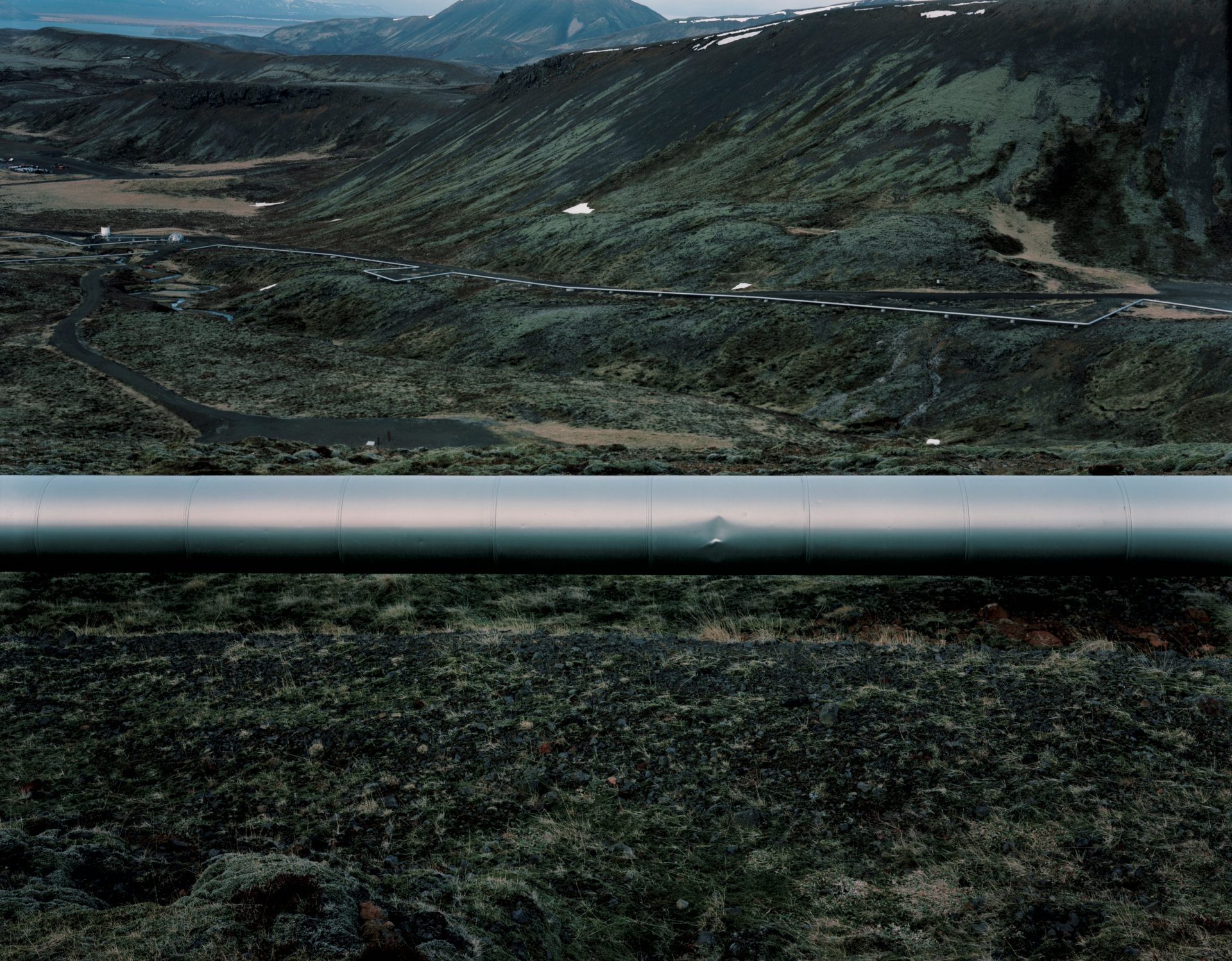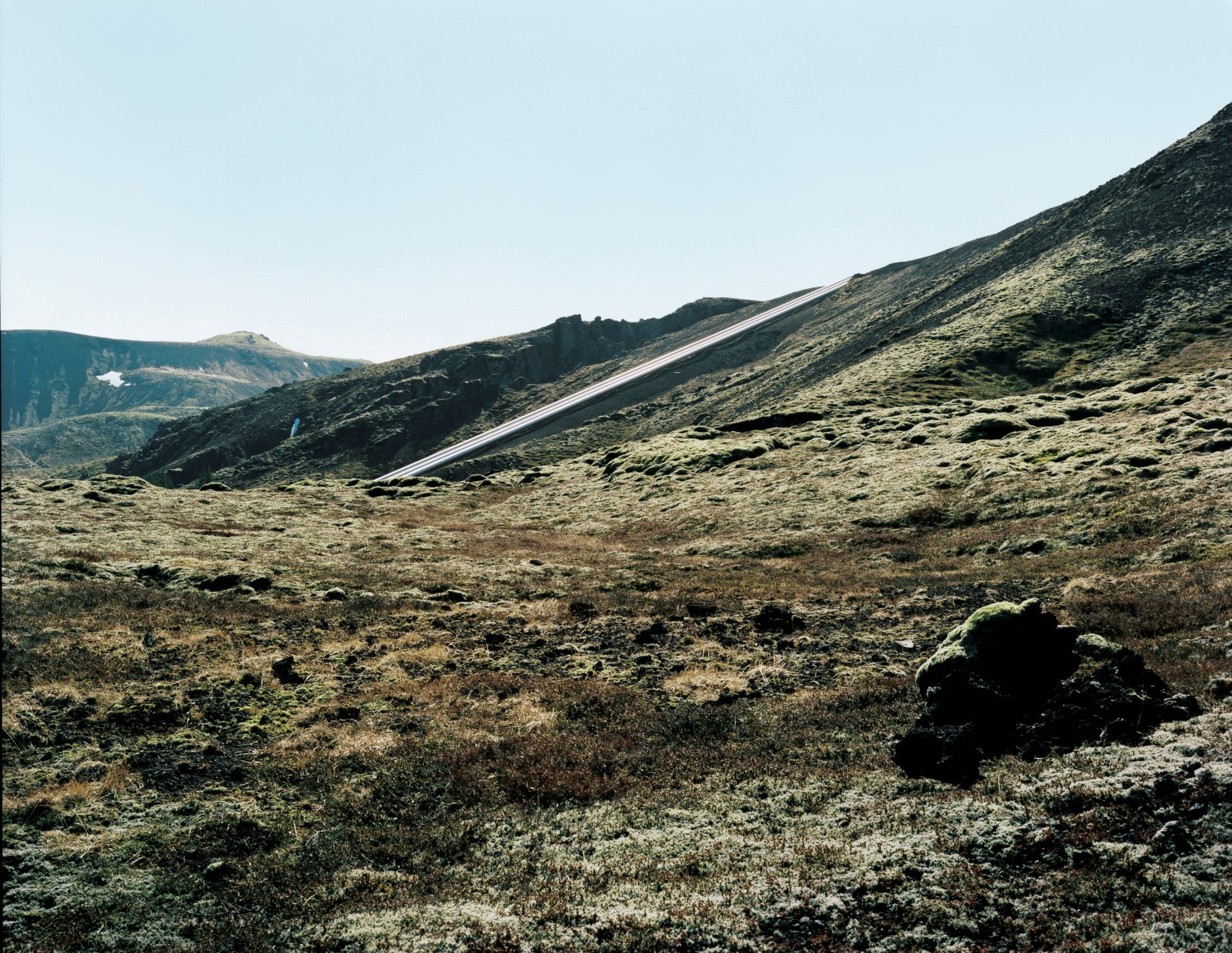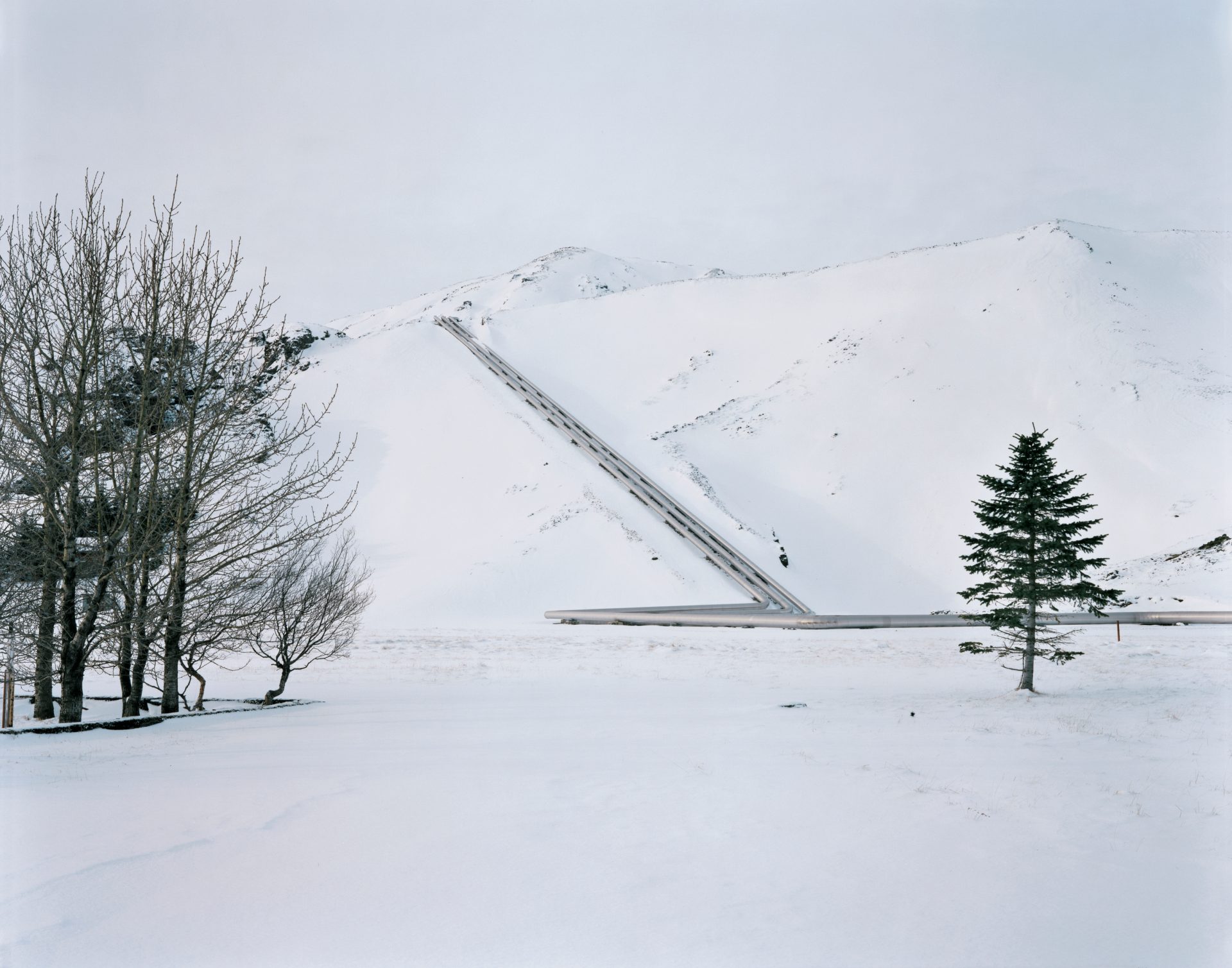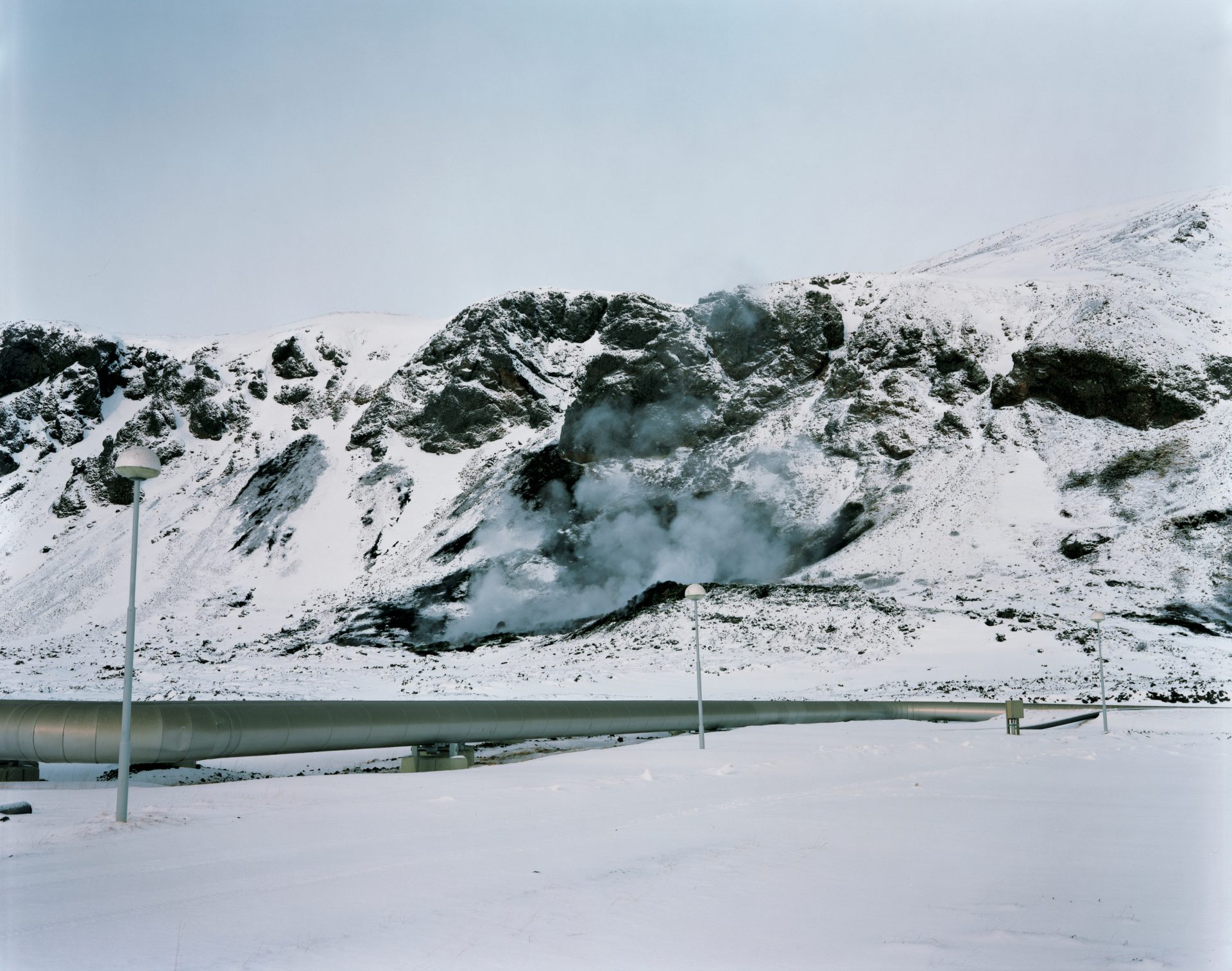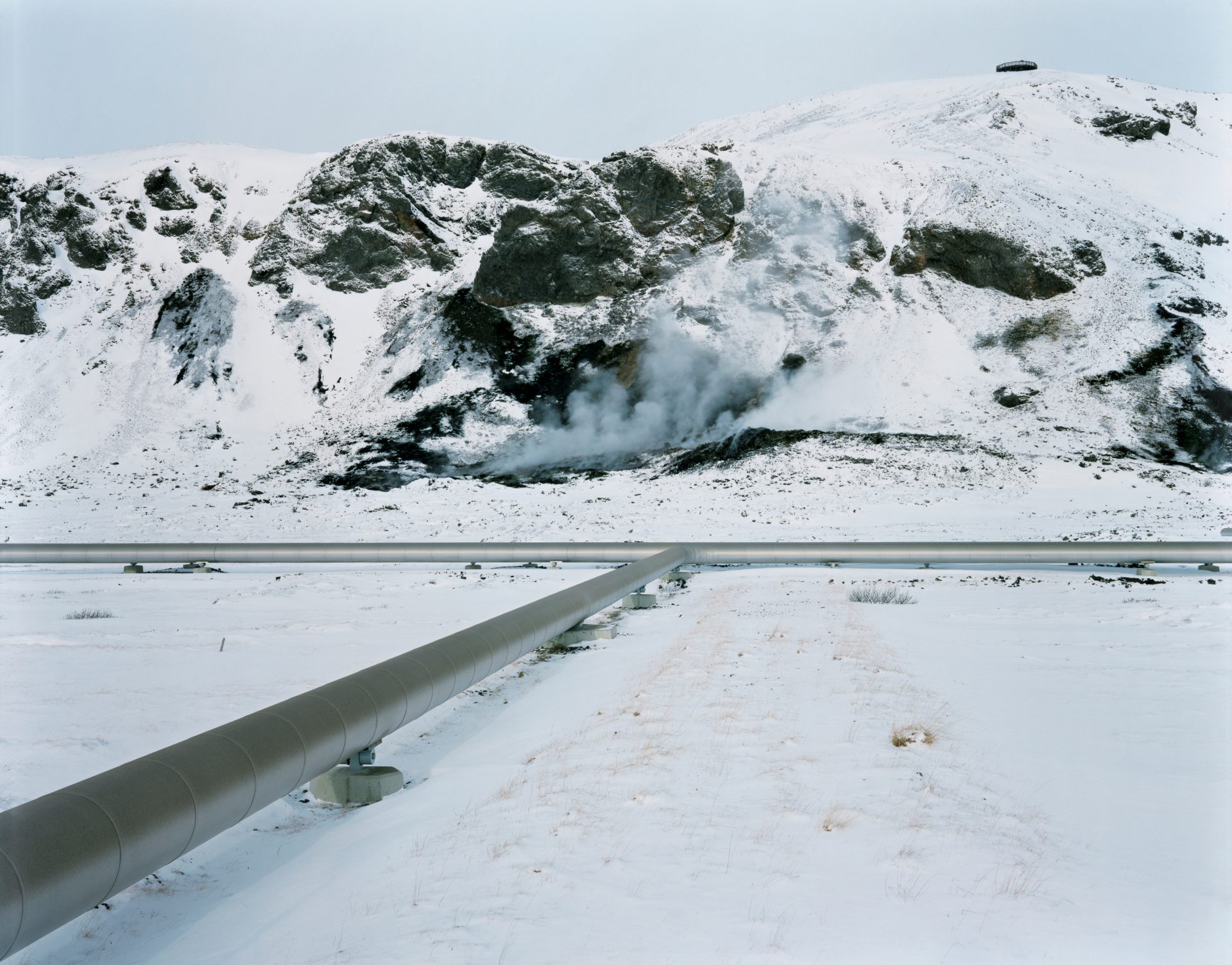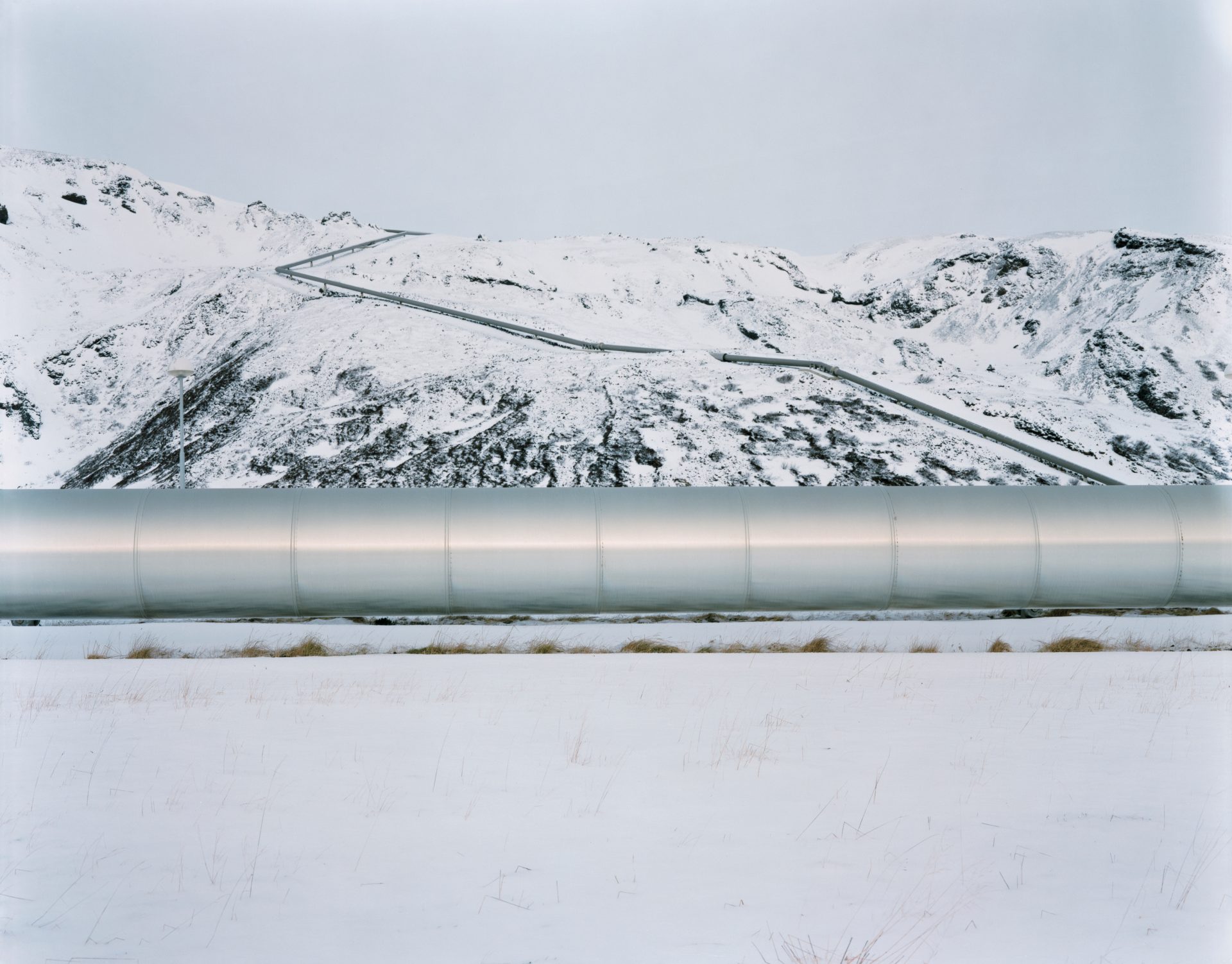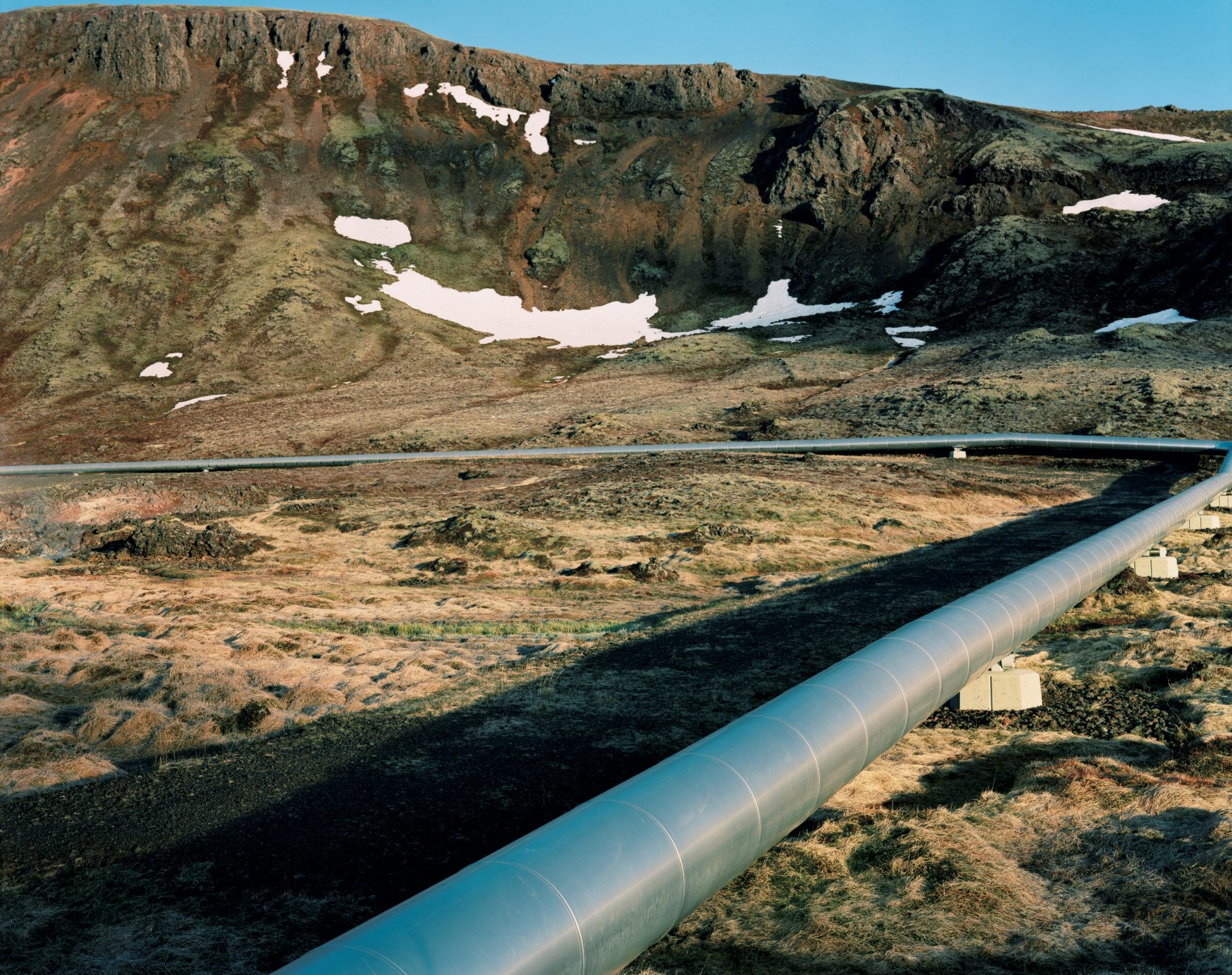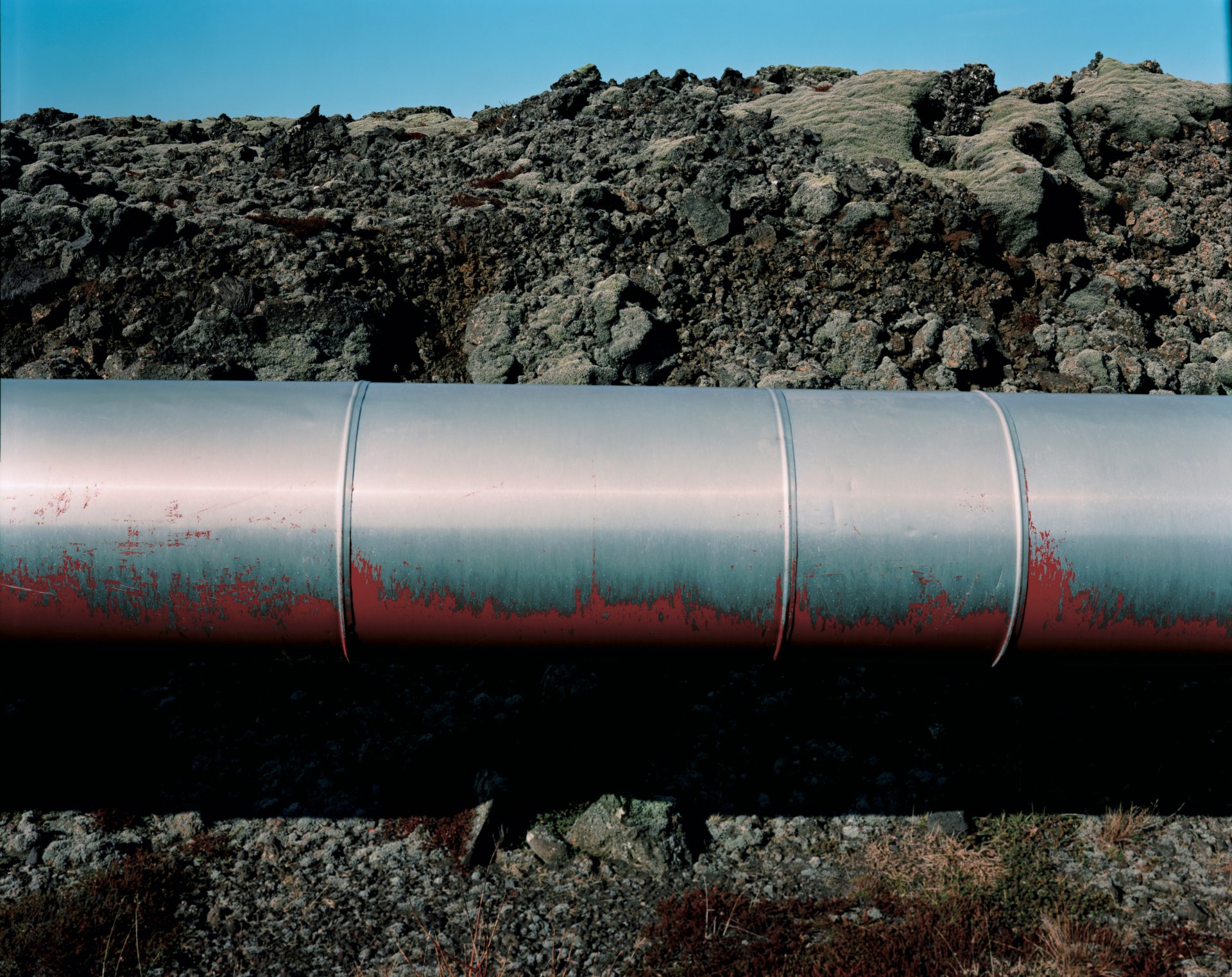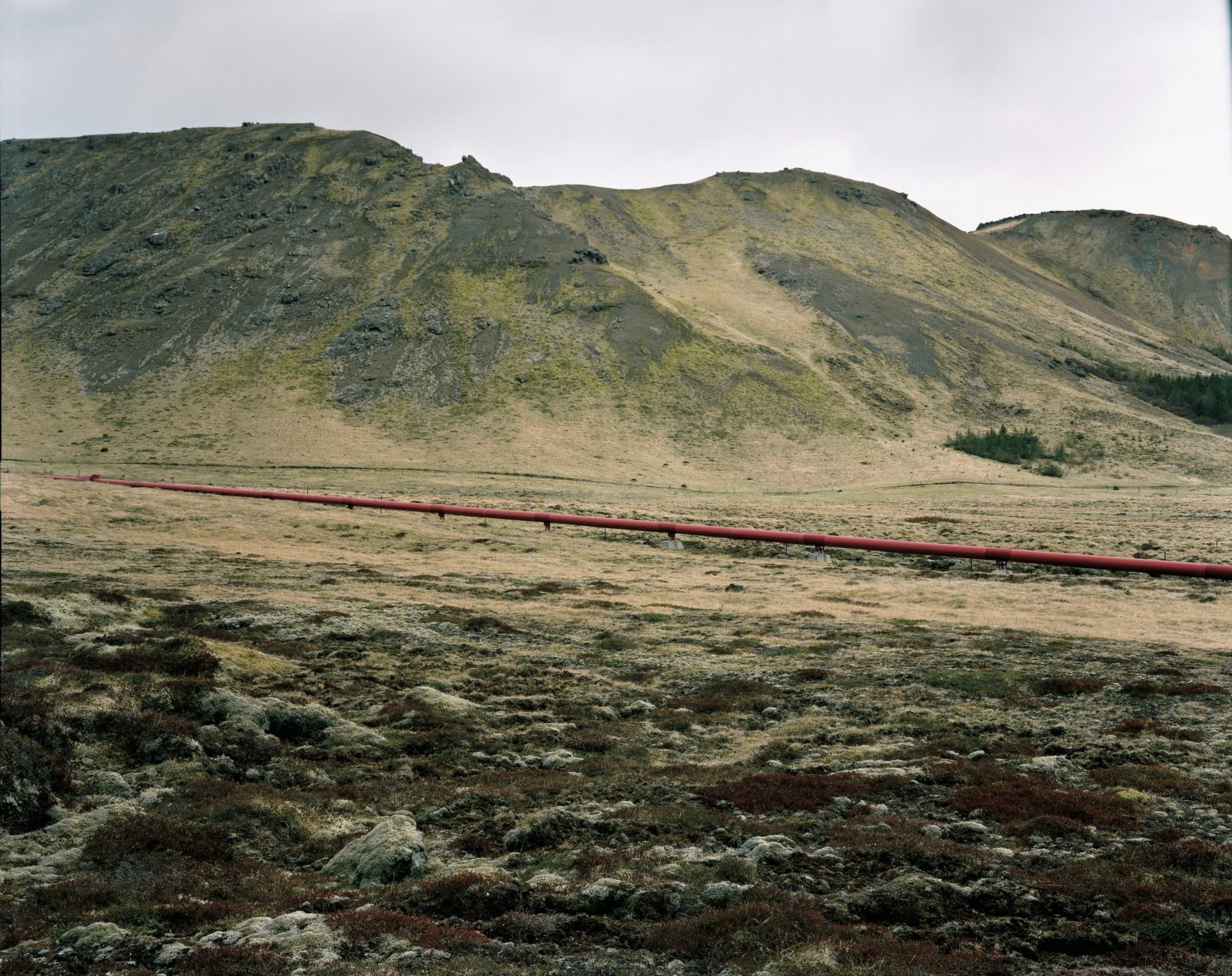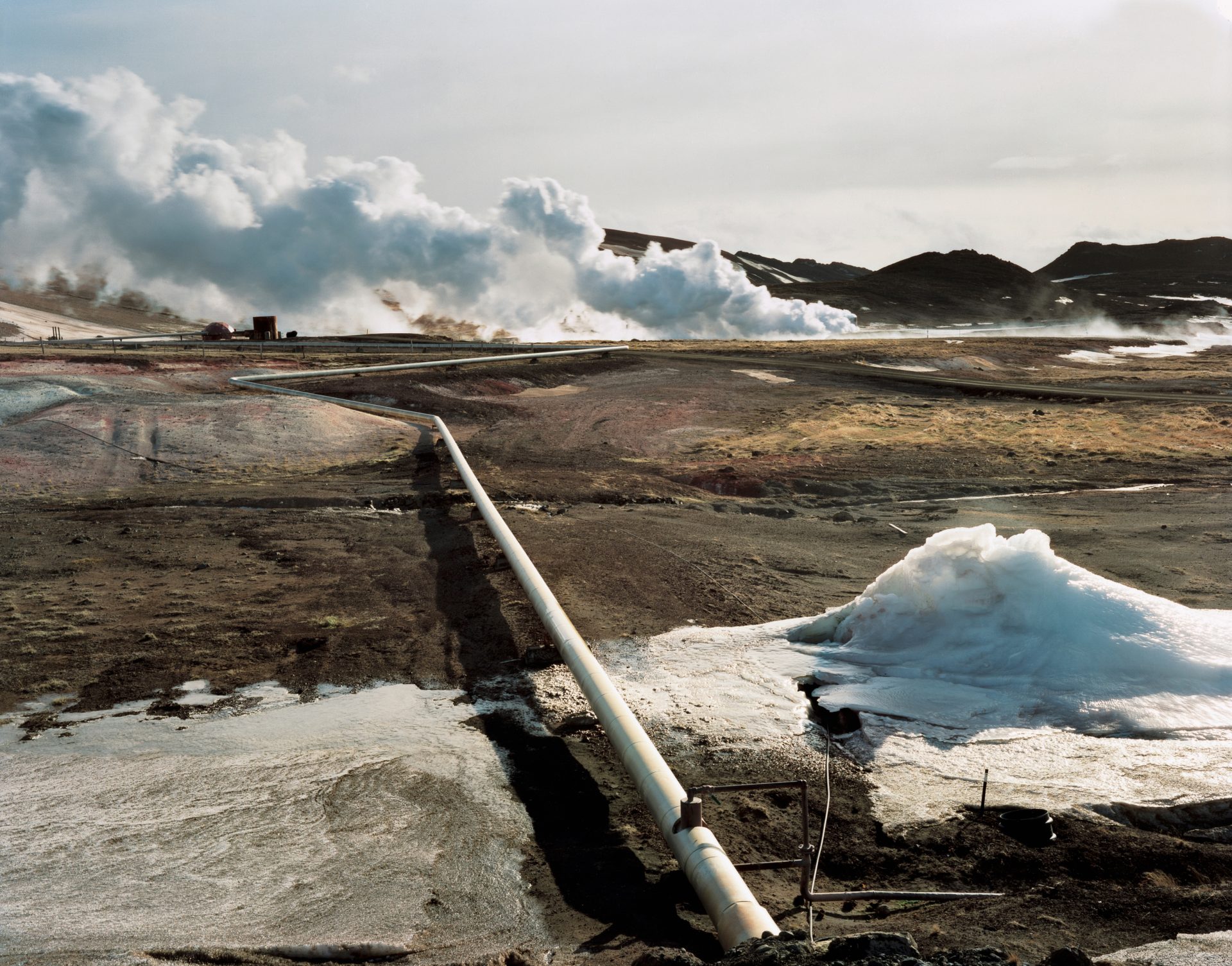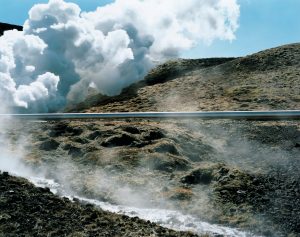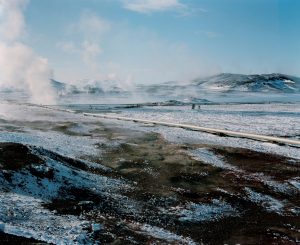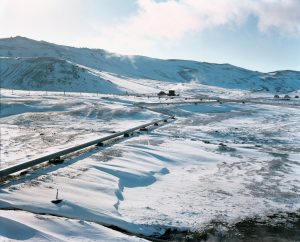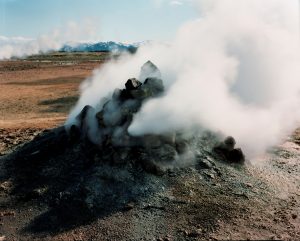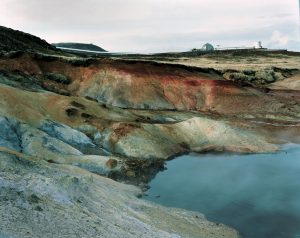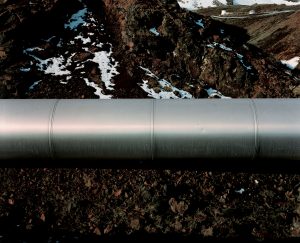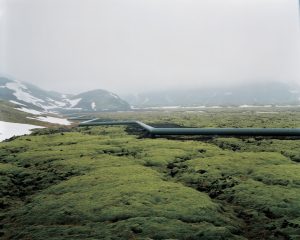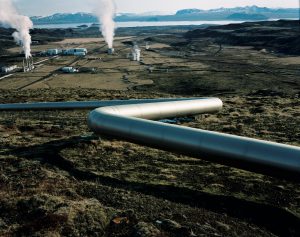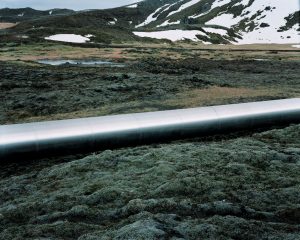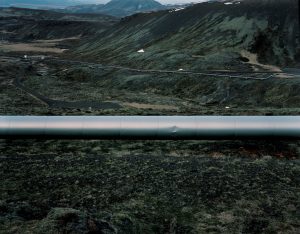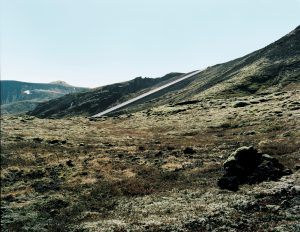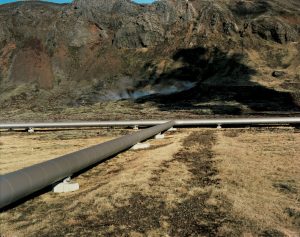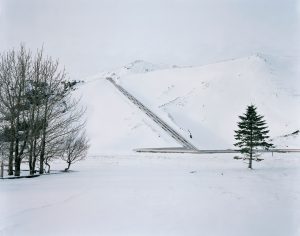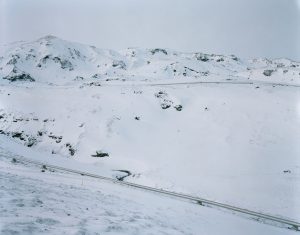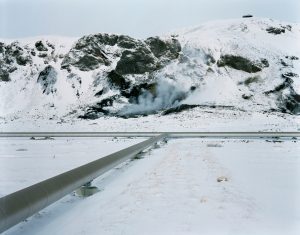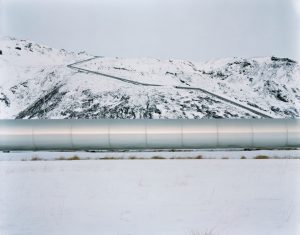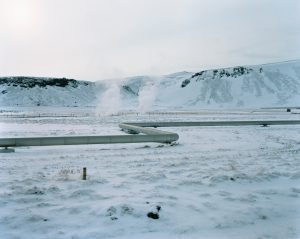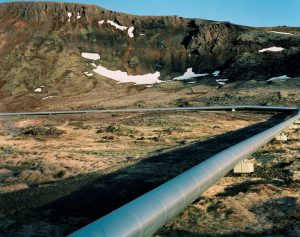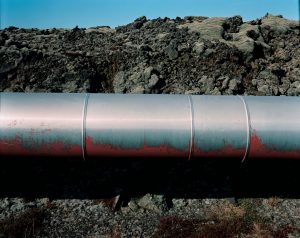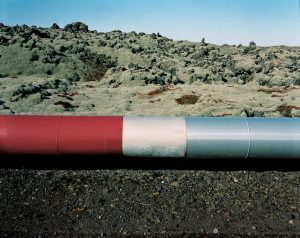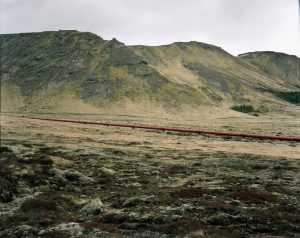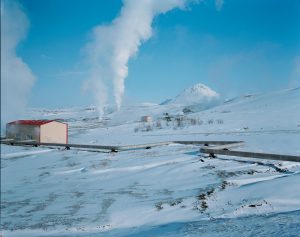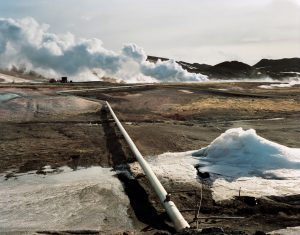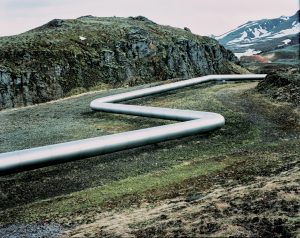北米最大の埋蔵量を誇るアラスカ北極海の油田は、1年のうち4分の3が凍結するブルードベイから、太平洋側の不凍港バルーデーズまでパイプラインで運ばれている。そのパイプラインは南北でアラスカを縦断し、その距離はじつに1,280キロ。人工の建造物としては、万里の長城についで、地球で2番目の長さである。1977年に約4年かけて建造、敷設されたが、パイプそのものは日本の製造会社が受注してもいる。
手つかずの「荒野」を旅するつもりで、初めてアラスカを訪れたのは2003年春。そこで僕の眼をとらえたのは、「荒野」ではなく荒野のなかをひた走るパイプラインのほうだった。大自然の中を延々にもちろん一度の断続もなくつづくその人工物は、人類の営みのどこかしらのおかしみやなんだか悲しみまでをも体現しているように思えた。なんでまた、人間はこんな最果ての地にまでこんなものを作らなくてはいけないのだろうかと。そして、それはまた石油という日常的に僕らが生活の中で必要としているものを運んでいる以上、僕ら自身でもあるとさえ言えはしないだろうか? ただただ美しい北極圏の自然のなかで、パイプラインは人の営み同様、どこかせつなく、どこかしらのおかしみを持って僕の眼をとらえたのだった。
The oil field in the Alaska Arctic Ocean, the biggest crude oil deposit in North America, is transported by pipeline; it stretches for 1,280 km through south and northern Alaska from Prudhoe Bay, which is covered with ice three quarters of the year, to Valdez, an ice-free port on the Pacific Ocean side. It is the second longest man-made structure in the world, following China’s Great Wall. It was completed in 1977 after four years of construction. A Japanese manufacturer received an order for pipe.
It was in the spring of 2003 when I first visited Alaska. I wanted to travel across the intact wilderness; however, what caught my eyes was not “wilderness” but the pipeline running through the wilderness. The artificial structure runs endlessly without intermission. It seems to embody a humorousness and even sorrow in the nature of human activities. Why should man have made this in such a place, at the edge of the earth? And I even felt that it is a part of ourselves, as long as it carries coal oil which we need in our daily life. In the vast nature of the Arctic Circle, the pipeline caught my eyes as nothing but beautiful, a somehow painful, humorous object of human behavier.
Scroll

